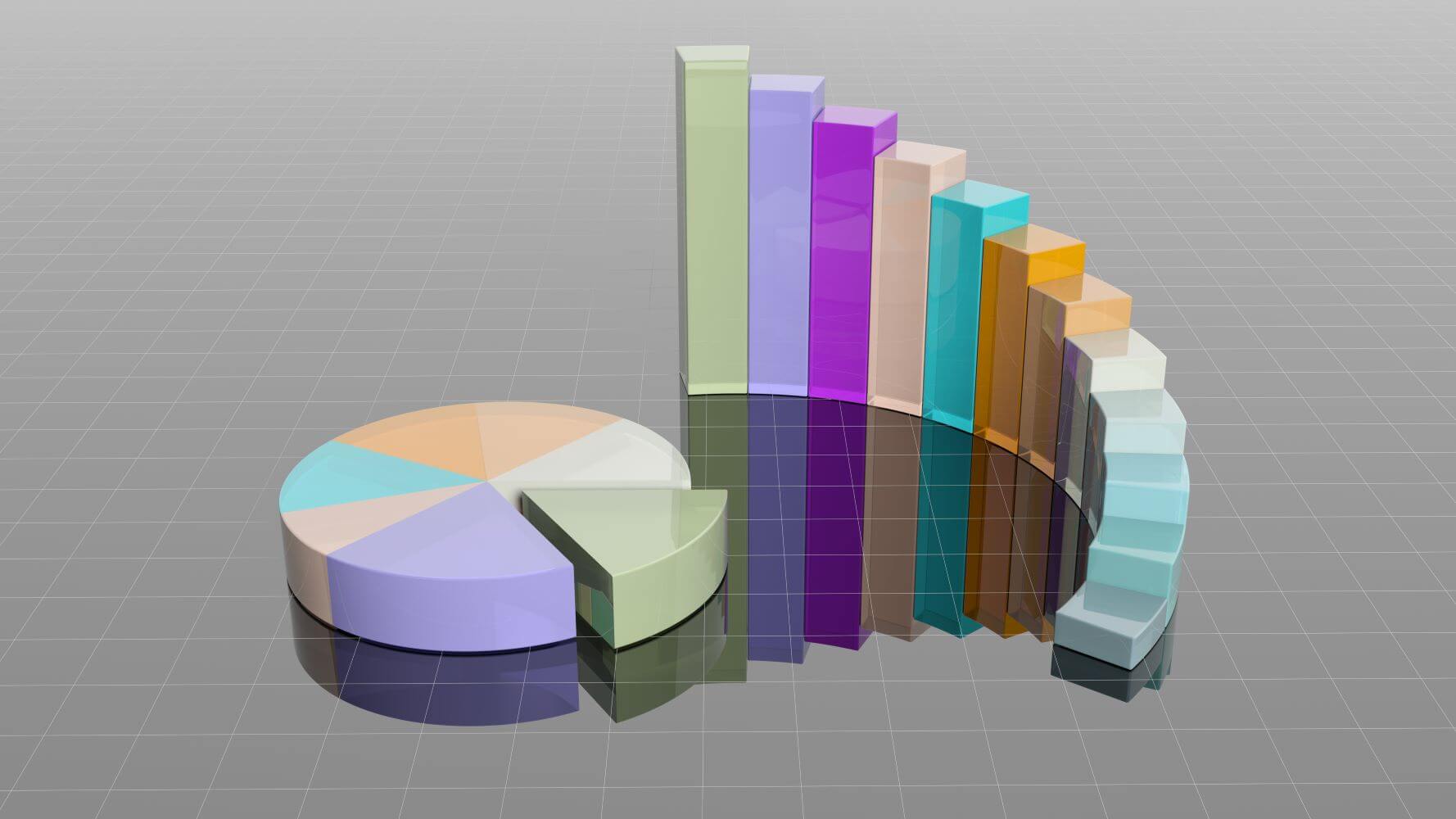GDP per capita: Understanding its impact on economic prosperity and global comparisons
GDP per capita, a crucial measure, provides a clear understanding of a country’s economic output per person. This widely used metric allows for comparisons of economic performance and living standards across nations, adjusting for population size.
What is GDP per capita?
GDP per capita stands for Gross Domestic Product per capita. GDP per capita means taking the total value of everything produced in a country (that’s the GDP) and dividing it by the number of people living there. It’s a way to measure how much economic activity a country generates per person, helping to show the wealth of an average citizen. It shows how much, on average, each person contributes to the economy. This is especially useful when you want to compare countries that might have big differences in population sizes.
How is GDP per capita calculated?
To calculate GDP per capita, you divide the total GDP of a country by its population. GDP is the sum of all goods and services produced within a country’s borders within a specific period, usually calculated annually.
The formula to find GDP per capita is pretty straightforward:
GDP per capita = Total GDPPopulation
This calculation helps average the economic output per person, giving a simpler view of a nation’s economic health. Data for this calculation usually comes from places like a country’s own statistical agencies or international groups such as the World Bank and the International Monetary Fund. These organizations gather economic data and other important figures to ensure accuracy and up-to-date information.
Understanding GDP per capita
GDP per capita is a widely used economic metric that helps measure a country’s economic prosperity by reducing its overall economic output to an average per-person basis. This measurement is particularly valuable because it provides a more relatable picture of what economic output means in terms of individual contribution and benefit rather than just total production.
Comparing Economic Prosperity via GDP per capita
GDP per capita is a crucial tool for comparing the economic prosperity of different countries. By dividing a country’s total GDP by its population, we get a figure representing the average output or income per person. This figure can then be used to compare levels of economic health and prosperity across nations, even if they have vastly different population sizes.
GDP per capita vs. total GDP
GDP per capita and total GDP are two metrics that provide different perspectives on a country’s economic health, but they serve distinct purposes and offer different insights.
Total GDP
This is the broad measure of a nation’s total economic output. It’s the sum of all goods and services produced in a country during a specific period. Total GDP is primarily useful for understanding the size and health of an economy on a macro scale. For example, the U.S. often has one of the highest GDPs globally, which reflects its large economy and its role as a major economic power.
GDP per capita
This metric divides the total GDP by the population size, providing an average economic output per person. It’s a useful indicator of the standard of living and economic well-being of the average citizen. For instance, despite having a lower total GDP than the U.S., countries like Norway or Switzerland may have a higher GDP per capita, indicating a potentially higher standard of living for their citizens.
.Policymakers use GDP per capita to formulate policies that aim to improve individual economic well-being, whereas total GDP might be used to make decisions about economic strategies on a larger scale, like international trade agreements.
GDP per capita vs. median income
GDP per capita can sometimes be compared to median income to analyze economic distribution. While GDP per capita averages total economic output across the entire population, median income shows what the typical person earns, which can highlight disparities in wealth distribution.
Global comparisons
Economists and policymakers use GDP per capita to gauge countries’ global economic development status. Comparing GDP per capita in the U.S. and India provides insights into the differences in living standards and economic opportunities in each country.
Implications of GDP per capita
GDP per capita is a significant economic metric that profoundly impacts economic policies and decisions. Reflecting the average income per person influences a wide range of policy decisions, from fiscal policy to social welfare programs.
Influencing economic policies:
Fiscal policy
Governments use GDP per capita as a benchmark for setting tax policies and public spending. For instance, in countries with high GDP per capita, governments might implement more progressive tax systems, aiming to redistribute income and fund social welfare programs effectively.
Social programs
Higher GDP per capita often leads to enhanced public services like healthcare, education, and public safety, as governments can allocate more resources per capita. Conversely, lower GDP per capita might limit these allocations, affecting the quality of public services.
Implications of Negative GDP Per Capita Growth:
Economic recession indicators
A decline in GDP per capita can signal a recession when the average economic output and, thus, the standard of living decrease. This could prompt policymakers to take preemptive measures to stimulate the economy.
Long-term development challenges
Persistent negative growth in GDP per capita might indicate structural economic problems, such as declining industries or technological lag, which require long-term strategic planning and investment to address.
Population dynamics
In some cases, negative GDP per capita growth could result from rapid population growth outstripping economic growth, highlighting the need for policies that address demographic changes, such as enhanced family planning and education initiatives.
10 countries with the highest GDP per capita
GDP per capita, a key indicator of economic prosperity, varies widely globally. Certain nations achieve remarkably high GDP per capita figures due to a combination of factors, including economic structure, resource endowment, and governance. These countries often demonstrate advanced technological infrastructure and high levels of investment, which contribute to their elevated economic status.
| Rank | Country | GDP per capita (EUR) |
| 1 | Luxembourg | €122,183.40 |
| 2 | Ireland | €98,635.80 |
| 3 | Switzerland | €98,273.10 |
| 4 | Norway | €88,033.80 |
| 5 | Singapore | €82,258.50 |
| 6 | United States | €79,394.10 |
| 7 | Iceland | €78,668.70 |
| 8 | Qatar | €75,702.00 |
| 9 | Macao SAR | €73,432.80 |
| 10 | Denmark | €64,077.00 |
Factors contributing to high rankings:
Economic diversification
Countries with diverse economic sectors tend to have more robust and stable economies. A mix of industries such as finance, technology, manufacturing, and services reduces dependence on any single economic sector and enhances economic stability, leading to higher GDP per capita.
Political stability and effective governance
Stable political environments and effective, transparent governance are critical for economic prosperity. These conditions foster an environment conducive to business operations and investments, attracting both domestic and foreign investments that boost economic output.
Resource wealth
Nations rich in natural resources—like oil, gas, and minerals—often enjoy high GDP per capita due to these resources’ lucrative export revenues. Countries like Qatar and Norway exemplify how resource wealth, coupled with good governance, can result in high per capita income
10 countries with the lowest GDP per capita
On the other end of the spectrum, several countries struggle with significantly lower GDP per capita. These nations often grapple with various challenges, such as political instability, inadequate infrastructure, and heavy reliance on agriculture, which hinder their economic development.
| Rank | Country | GDP per capita (EUR) |
| 1 | Burundi | €213.94 |
| 2 | South Sudan | €392.33 |
| 3 | Malawi | €447.08 |
| 4 | Yemen | €452.33 |
| 5 | Sierra Leone | €489.73 |
| 6 | Central African Rep. | €499.97 |
| 7 | Madagascar | €500.51 |
| 8 | Sudan | €508.44 |
| 9 | Mozambique | €612.96 |
| 10 | Niger | €623.19 |
Factors contributing to low rankings:
Economic dependence on agriculture
Many of the world’s poorest nations rely heavily on agriculture, particularly subsistence farming, which contributes minimally to GDP. These agricultural economies are less likely to generate the wealth seen in more industrialized countries, leading to lower GDP per capita.
Low investment levels
Insufficient investment in crucial sectors like education, technology, and infrastructure limits economic growth and development. Without these investments, countries cannot build the capital necessary for economic expansion and improvement in living standards.
Global growth projections
The forecast for global GDP growth is a vital indicator of worldwide economic health and prosperity. Current projections suggest a steady increase in global GDP, influenced by technological advancements, emerging markets, and recovery strategies post-economic downturns.
Impact on GDP per capita
As global GDP grows, GDP per capita is expected to rise correspondingly, improving living standards worldwide. However, the distribution of this growth might be uneven, benefiting countries with strong technological infrastructures and stable political climates more significantly.
Trends and future projections
Economists predict that while advanced economies may see moderate growth, emerging economies could experience faster growth due to rapid industrialization and digital transformation. Environmental sustainability and innovation are likely to play crucial roles in shaping future economic landscapes, with green technology and renewable energy sectors possibly driving the next wave of global economic expansion.
The bottom line
The global economic outlook appears optimistic, with anticipated improvements in GDP per capita signaling enhanced global prosperity. However, achieving equitable growth remains challenging, necessitating policies ensuring all regions can benefit from global economic advancements. The focus on sustainable practices will also be pivotal in maintaining long-term economic stability and growth.
Simplify your business finances today
Set up a low-cost business account in just 5 minutes with OneMoneyWay so you can focus on growth for your business.
FAQs
What does GDP per capita mean in simple terms?
GDP per capita is the average economic output per person in a country. It’s calculated by dividing the total GDP of a country by its population, providing a measure of the economic well-being of its citizens.
What is the difference between GDP and GDP per capita?
GDP is a country’s total economic output, while GDP per capita divides this total by the population, showing the average economic contribution per person. GDP gives a sense of an economy’s overall size, whereas GDP per capita indicates the standard of living.
How to calculate GDP per capita example?
To calculate GDP per capita, divide the country’s total GDP by its population. For example, if a country has a GDP of $1 trillion and a population of 50 million, the GDP per capita would be $20,000.
Why use GDP per capita instead of GDP?
GDP per capita is used instead of total GDP to provide a clearer picture of individual economic well-being. It helps compare the standard of living across countries with different population sizes, offering a more accurate reflection of prosperity.
Which country has the best economy?
The “best” economy can be subjective, but in terms of GDP per capita, Luxembourg often ranks the highest, indicating a high standard of living and economic prosperity for its citizens. However, the United States has the largest economy in terms of total GDP.







